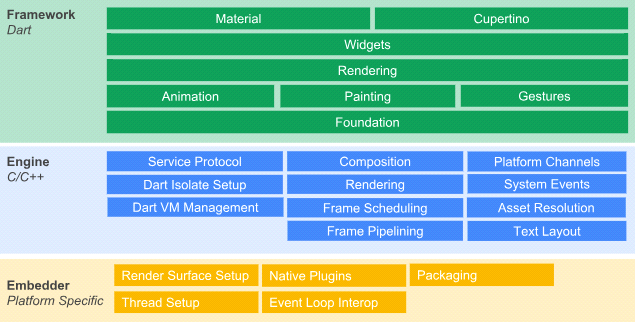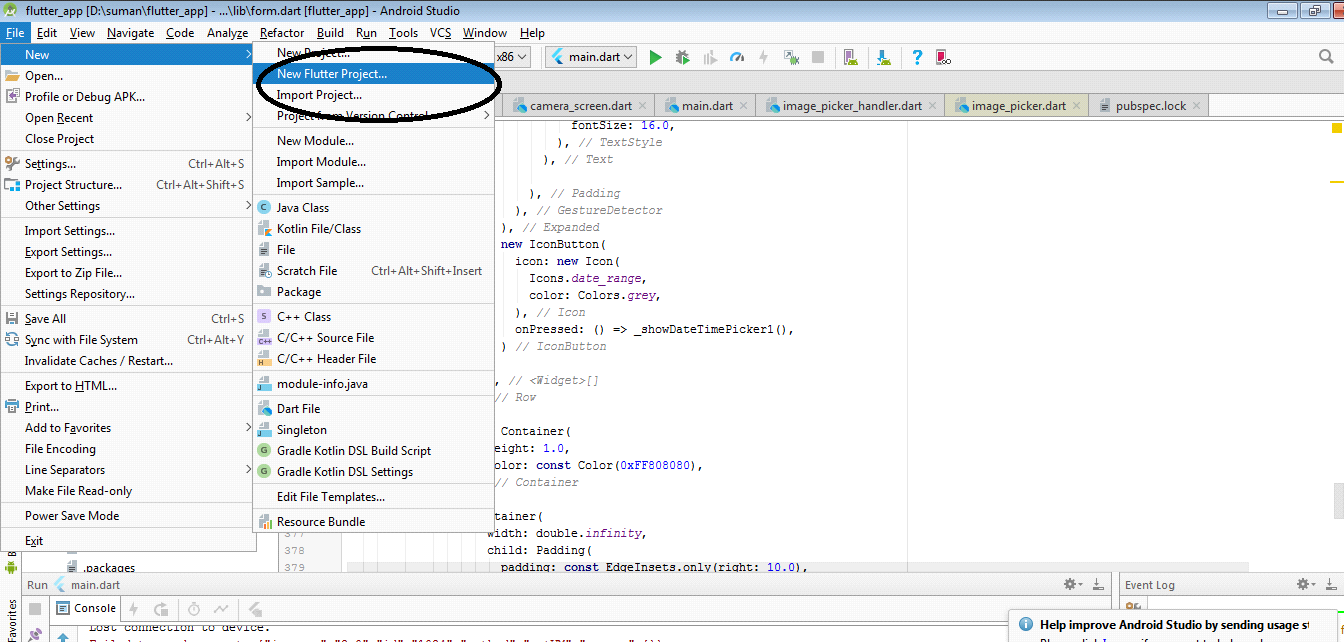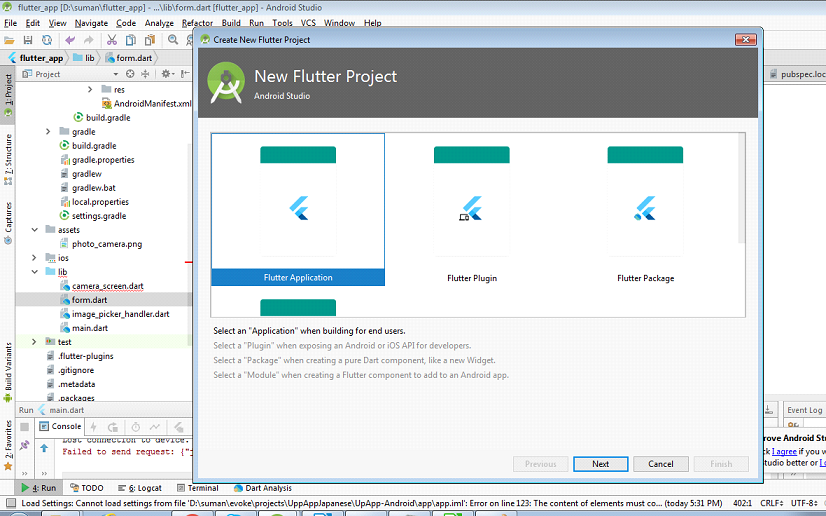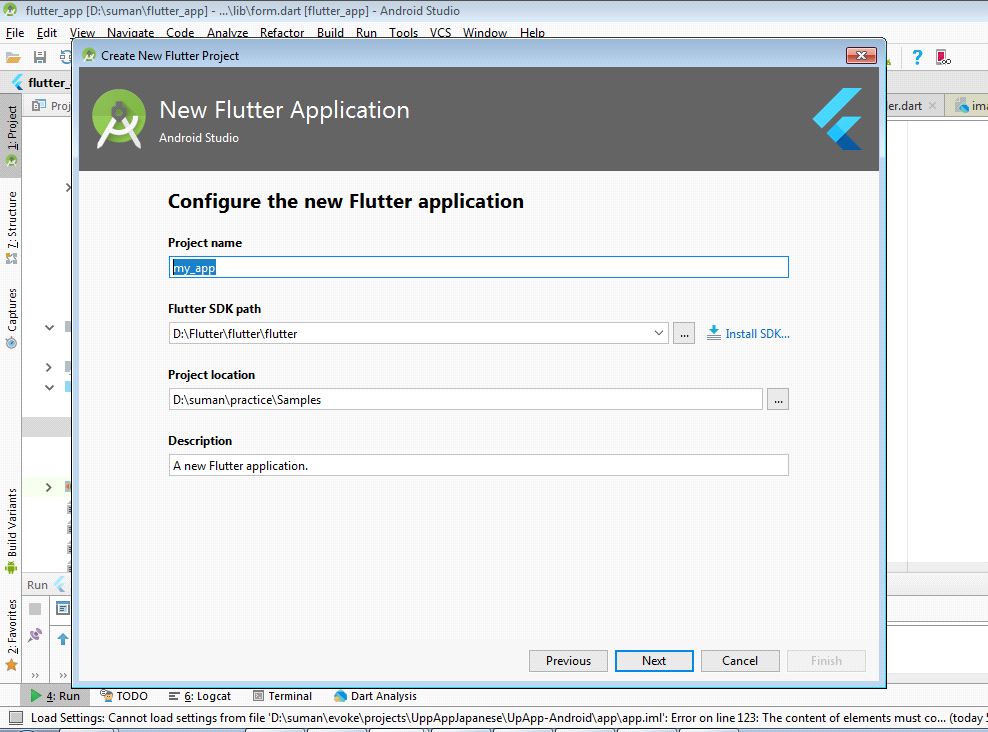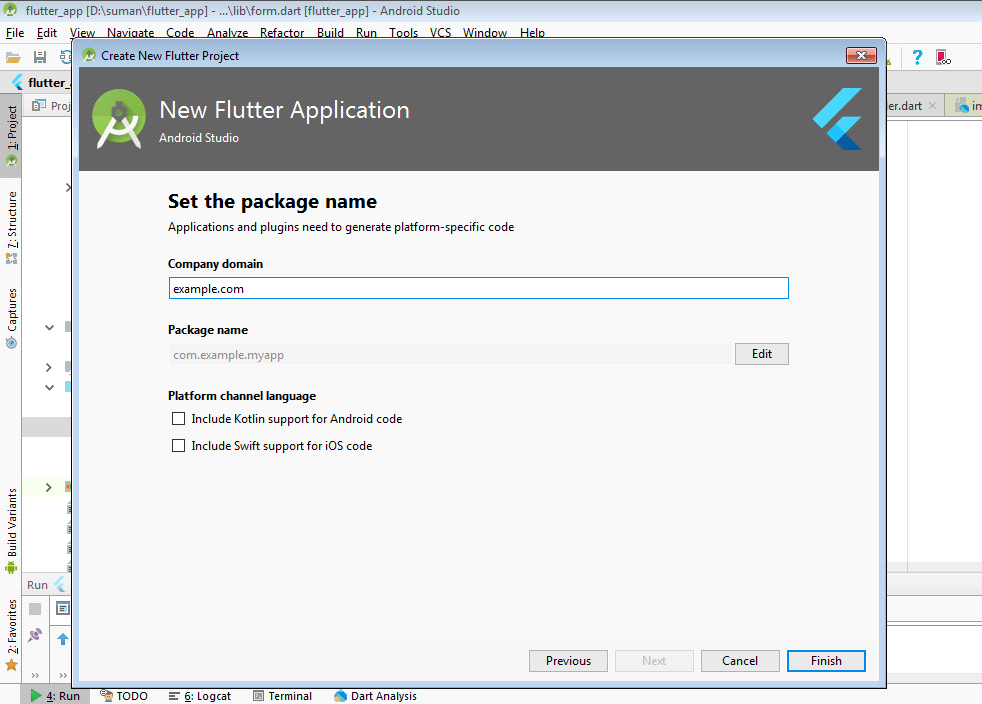What is Flutter?
Flutter is a new cross-platform mobile software development kit (SDK) by Google for developing Android and iOS applications from a single code base. The goal here is to enable developers to deliver high-performance apps that feel natural on different platforms. Flutter uses Google’s own language ‘Dart‘ for the development process.
6 Merits That Make Flutter a Favorite in Mobile App Development
Following are some of the crucial advantages from an App Owner’s perspective:
- Highly Productive: Flutter hot-reload feature helps in faster development, which means you can instantly see the result of your code changes, so it takes less time for experiments, bug fixes and adding new features. We can use a single code base for Android and iOS development.
- Build Beautiful UI: It comes with default features like a rich set of material design and Cupertino (iOS) widgets. By using these, we can develop beautiful UIs, giving native feel and experience.
- Reactive Framework: Flutter uses a reactive framework, which means there is no need to update UI content manually. We only need to update the state of the variables, which will reflect automatically in the UI.
- AOT (Ahead of Time) Compilation: It uses AOT mode for compilation and creates intermediate pre-compiled binaries for the specific platform before execution, resulting in decreased overheads for dense computing and UI rendering.
- Access Native Features & SDKs: Accessing native features and SDK is very easy, as it allows you to build native apps on iOS and Android from a single code base.
- Open-source: It is an open-source mobile SDK created by Google.
Flutter Architecture – The Technical Overview
Flutter is developed using C, C++, Dart, and Skia (a 2D rendering engine). The architecture diagram below presents a better picture of the three key layers.
Getting Started
To start with flutter, we require machines with the following configurations for specific platforms.
Windows
- A system with a minimum of 400 MB (does not include space for IDE) disk space and running Windows 7 SP1 or later (64-bit).
- PowerShell 5.0 or newer
- Git for Windows
- Android Studio/IntelliJ IDEA/Visual Studio Code
Mac
- A system with a minimum of 700 MB (does not include space for IDE) disk space and running macOS (64-bit).
- Tools: Bash, mkdir, rm, git, curl, unzip, which
- Android Studio/IntelliJ IDEA/Visual Studio Code
- Apple’s Xcode IDE
Linux
- A system with a minimum of 600 MB (does not include space for IDE) disk space and running Linux (64-bit).
- Tools: bash, mkdir, rm, Git, cURL, unzip, which
- Android Studio/IntelliJ IDEA/Visual Studio Code
Installation Process for Android Studio
Step1: Downloading Flutter SDK
- Download Flutter SDK as a zip from Flutter website.
- Extract the zip file in a location where you wish to install Flutter (e.g. c://desktop//src//flutter). Please ensure that the file is not extracted in c://Program files where the user needs admin privilege.
- Look for the flutter_console.bat file inside the ‘Flutter Directory’ and then double-click to start.
- You are now ready to use Flutter commands.
Step2: Android Studio Installation
- Download Android Studio version 3.0 or later.
- Click on Android Studio.exe file. Then install the Android SDK, platform and build tools which are required by Flutter for development.
Step3: Flutter and Dart Plugins Installation
- To install these plugins, open Android studio.
- Open plugin settings from File navigation tab (File -> Settings -> Plugins).
- Click on browse repository, search for the Flutter plug-in and click ‘install’.
- Click on ‘Yes’ when prompted to install the Dart plugin.
- Now click on ‘Restart’.
Building Sample App Using Flutter
Please follow the steps outlined below to create a new Project/App.
- Select File -> New -> New Flutter Project…
- Select Flutter application as the project type and press ‘Next’.
- Enter a project name (e.g. my_app), and press ‘Next’.
- Click ‘Finish’, wait for Android Studio to install the SDK, and create the project.
Sample project for field executive. Below are the screenshots of the project.
Conclusion
Flutter provides high-speed development that adds to your productivity in creating the best mobile applications. It also enables developers to create iOS and Android apps from a single code base. Flutter comes along with different widgets to build beautiful, flexible UIs. You can also refer their official documentation, which is extremely helpful.
Evoke’s Mobile App Development Services
Evoke Technologies is an innovative information technology services firm offering world-class software solutions. We are SEI-CMMI Level 3 appraised, ISO 27001 and 9001 compliant IT enterprise that focuses on quality and delivering business value. Being a client-centric and relationship-based company, we are focused on building cost-effective, custom-designed mobility solutions that enable you to mobilize your field sales and service thereby improving business efficiency. At Evoke, we are committed to helping more businesses like yours discover how much they stand to gain from going mobile. Our end-to-end mobile app development services catering to the diverse needs of your business for various operating systems and mobile platforms. We learn the ins and outs of your work to pinpoint where mobility services can make a measurable difference. We always stand ready to support your new mobile engagement activities with our dedicated team of mobile app developers.
Author
 |
Suman Chidurala is a Senior Technical Associate at Evoke Technologies. He has six years of experience in mobile application development. Suman is passionate about emerging technologies and likes to share his knowledge with his peers. |


